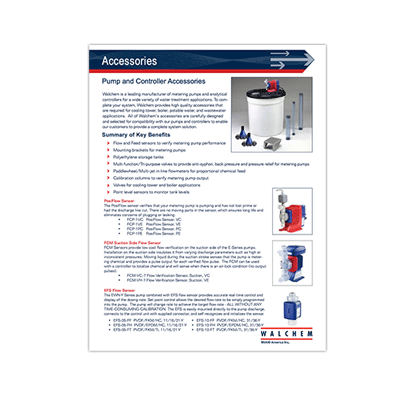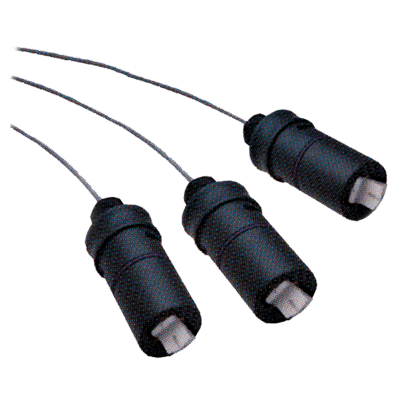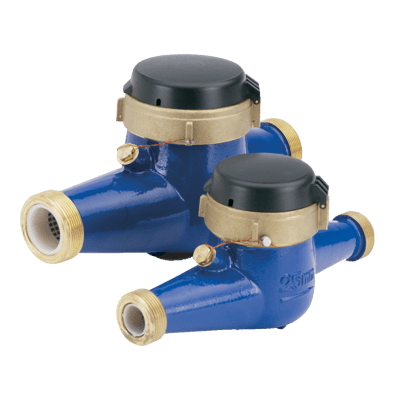Water Controller Accessories – Flowmeters
Measuring the flow rate of water or any given fluid is a crucial aspect in a water treatment controller system. A flow meter does this task by measuring the amount of water flowing through the pipe or tubing. Walchem manufactures water treatment controllers and all the related accessories such as flow meters of various types. Water treatment flow meters are integrated with controller systems in cooling tower and boiler applications. We strive to keep our inventory stocked with all these accessories so that they can be shipped immediately to cater to our clients’ requirements. If you require any of these accessories, contact us at 508-429-1110, and we will do our best to help you find the right one based on your requirements and system compatibility. We look forward to serving you in the best possible way!
Types of Water Treatment Flow Meters We Offer
Here are a few types of water flow meters we offer.
- Multi-jet-in-line: These meters work on the multi-jet principle and offer an accurate output. In our WFM series flow meters, we offer them in ¾, 1, 1½ and 2” NPT pipe sizes and for flow rates from 0.22 to 132 GPM. They have a simple design and offer accurate readings even for low-quality water. These meters give signals to the controller in the form of a pulse. They have an impeller placed in a ring of jets, with inlet jets on one level and outlet jets on another. There is a gear train that drives the register totalizer dials.
- Paddlewheel: These WFP impeller-type insertion meters are used in pipes for flow measurement. We offer these in a sizes ranging from ½” to 6″. These meters have a rotating paddlewheel that is set in the fluid path. Our paddlewheel meters have high quality jewel bearings and nickel-bound tungsten carbide shaft. They offer accurate output for low flow performance, too. The rotation of the rotor is detected by a non-drag Hall-effect sensor. They offer output in the form of a pulse-type square wave, which can be sent up to 2000 feet without a transmitter. These meters are not depth-adjustable but reliable, and easy to install and operate. They are suitable for fluids without much particulate matter and gravity flows.
Installation and Maintenance Guidelines for Flowmeters
It is crucial to refer to the instruction manual for installation and maintenance of any of these flow meters. Aside from this here are some useful guidelines to install and maintain our flow meters.
- Working principle: All our WFM series flow meters work on the multi-jet principle. Some of meters, such as paddlewheel meters use a solid-state, long-lasting Hall-effect sensor, which requires power, while other types use a reed switch. These are impeller-type insertion meters that belong to the WFP series. Some of them are only meant for totalizing and so do not have a sensor, while other types have an encapsulated sensor. The installation steps would vary slightly based on the type of meter.
- Installation: These meters must be installed horizontally with the register upward. Vertical measurement may hamper the accuracy level and even compromise the operating life of bearings. We offer male NPT threaded couplings with these meters, and those on one end are a size bigger than the meter. Also, we offer color coded output cables and direct plug-in connectors aside from sensors. Here are the steps.
- You need to set the pulse rate depending on the type of sensor or magnetic pointer location.
- Determine the meter size and the required pulse rate.
- Also, note the magnet pointer position and move the pointer towards the desired dial position.
- Connect the sensor to the remote device.
- Lift the meter top without removing the seal ring.
- Remove the magnet pointer from the shaft and the plain pointer from the dial.
- Now place the seal ring and thread the meter top. Make sure it is tightly fixed.
- Maintenance: We always recommend periodic servicing from an authorized distributor so that the protective tamper-proof wire-and-seal is not compromised. Periodic maintenance involves inspection, cleaning, calibration, and so on.
- Inspection: Periodic inspection is a must to avoid costly repairs. With regular testing, you can easily identify, leaks, corrosion issues, and so on. This also helps make a decision regarding component repair or replacement before time.
- Calibration: Calibration and recalibration after every few uses ensures accuracy in readings. While we ensure calibration of all our accessories before they are shipped or installed, it is important that you check the calibration on a periodic basis or after specified use. Some meters may be calibrated once in a year, while other may require it every five years.
- Cleaning: Regular cleaning is a must to avoid residue buildup and subsequent malfunctioning of the flow meter. Clean the strainer at least once in a year or as required, depending on the type of water that flows through it. Pull out the strainer or backflush the meter so that any particulate matter can be thrown out. Refer to the manufacturer’s guidelines for cleaning for any details.
Factors to Consider When Choosing Flow Meters
To ensure the normal functioning of water treatment controllers, it is important to pay attention to each accessory, such as a flow meter, which is a part of that control system. There are many factors you need to consider when choosing the right water treatment flow meter based on your requirements.
- These meters can be used for water or wastewater treatment. Wastewater flow meter and industrial water treatment flow meters are designed to work in a specific range of flow rates and can handle a certain level of contamination in water or any given fluid. So, knowing your application requirements is key.
- Next, identify the flow rate range you require as also the level of accuracy required in your application.
- Select the type of flow meter such as impeller-based insertion methods, positive displacement meters, and so on depending on the physical and chemical properties of the fluid among other factors. This is also applicable to the selection of materials. For instance, if you deal with heavy metals in water or corrosive fluids, the materials chosen must be able to withstand these elements.
- Check the installation guidelines against your current setup and double check the compatibility requirements.
- Check the calibration process and maintenance requirements. Weigh all of these aspects against your budget.
- Consider the operating environment and the parameters the flow meter will be exposed to, such as corrosive metals present in water, temperature, and pressure requirements.
- Ensure the meters are insulated or shielded from exposure to extreme heat or cold, direct sunlight, and corrosive materials.
- Compliance with industry standards and regulation is a crucial factor that must be considered to prevent safety issues, and reading accuracy issues.
- Check if the manufacturer offers an updated user manual.
- Consider installing redundant flow meters as a backup in case any of the other meters fail to function at any point. This saves on loss of productive time and costs.
Applications of Flow Meters
Our flow meters are widely integrated with water controllers and hence find applications across the following applications
- HVAC systems
- Wastewater treatment
- Chemicals
- Industrial water treatment
- Cooling towers
- Boilers
We, at Walchem, are experts in manufacturing water controllers and related accessories such as some types of flow meters. These accessories are developed with careful attention to detail as we always intend to make a flawless water controller system. We offer these meters separately and also as a part of an assembled system. We are absolutely reliable partners when it comes to quality and customization along with fast turnaround times. Over the years, we have developed expertise in this segment, which enables us to offer you the best possible controller systems and accessories for water treatment applications. If you have any questions regarding Walchem’s water treatment flow meters, need to share requirements, or discuss custom options or pricing, feel free to reach us. You can write to us at cs@walchem.com or call us at 508-429-1110.



